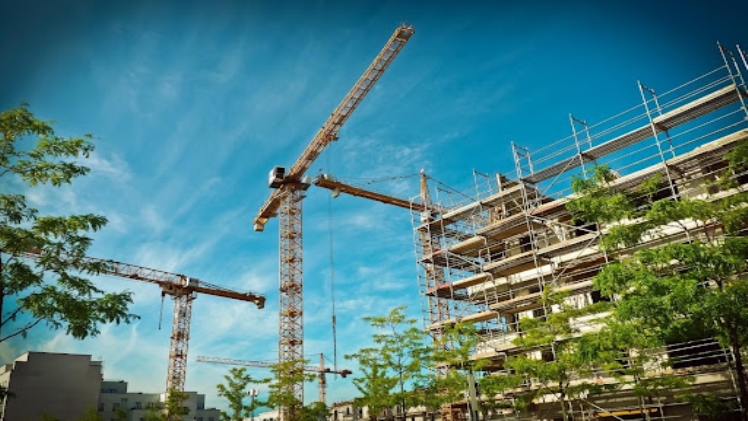Like most industries, construction took a slight nose dive during 2020. Yet, forecasters predict it will be back this year and settle into a CAGR of 2.2% by 2025.
So, we’ll soon see the familiar sight of cranes on our skylines as builders get back to work, signifying some normality at last.
We all take construction work for granted, but it’s a pretty complex and interesting industry. For instance, did you know there are five major construction types, classified according to their fire resistance?
Find out more about the different types, here.
How Do We Classify Construction Types?
There are several different and unrelated criteria for classifying buildings. The International Building Code (IBC) dictates most of these categories. This ensures we maintain consistent standards in all our construction endeavors.
As such, some building categories include:
- Ownership (public vs private)
- Building materials
- Occupancy (single vs multi-family)
- Purpose (retail, commercial, assembly, etc.)
- Size (single vs multi-story)
The IBC classifies the five types of buildings we’ll discuss according to fire resistance, which also relates to use and building size. The IBC describes these buildings in terms of how long a structural element can stand up to fire before it collapses.
For instance, building materials with a zero rating will fail within an hour, while those with a rating of 2 will hold out for 2 hours.
The above determines the type of materials that construction companies can use in a building as follows:
Type I Constructions
Type I buildings are the top of the pops when it comes to construction types. They’re composed of non-combustible, high-quality materials. These include steel framing, poured concrete, and fire-proof insulation.
They’re rated to withstand fire for at least two hours.
High-rise buildings and most multi-story buildings make up this category.
There are two further classifications within Type I constructions.
These are:
- Type IA for high-rise buildings and Group I occupancies
- Type IB i.e. group R and mid-rise office buildings
Most skyscrapers are type I A buildings with extra layers of protection and no height restrictions. They require detailed and complex construction techniques using telescopic or tower cranes.
Type 1 B buildings have only basic fireproofing. The height limit for these buildings is 12 to 16 stories or 160 feet. Construction companies use state-of-the-art Komatsu, Caterpillar, or Hiab knuckle boom cranes for these buildings.
Type II Buildings
These buildings are usually newer constructions, like big box stores and strip malls built from non-combustible materials such as metal and concrete blocks.
They can resist fire for up to one hour.
There are also two varieties of type II buildings. These are:
Type II A – Protected Non-Combustible Buildings
Most modern-day school buildings fall into this category. All materials used in these constructions, including framing, interior walls, roofing, floors, and exteriors, must have non-combustible properties.
TYPE II B – Unprotected Non-Combustible Buildings
This type of construction is common in commercial buildings. The materials used in these constructions have no fire resistance, but they’re naturally non-combustible, e.g. steel.
Type III Buildings With Non-Combustible Walls
These buildings must contain the fire within their exterior walls and prevent it from spreading to neighboring properties. To this end, the walls comprise materials like precast panels, brick, concrete blocks, or masonry.
Although the walls have a good fire-resistance rating, the roofs may collapse if they start burning. As such, a priority is to give any occupants enough time to escape before the roof collapses.
Type III A buildings have a wooden roof or floor assembly that’s 1-hour fire protected, while Type III B buildings have no fire protection, they’re usually older constructions found in the ‘warehouse’ districts of older cities.
Type IV Constructions With Heavy Timber Framing
Type IV constructions have exterior walls made of non-rated materials. The interior walls and framing comprise heavy timber.
This framing comprises thick, strong girders made of laminated wood. These large beams burn slower, giving occupants a chance to escape.
Type V Wood Constructions
There are no stringent requirements regarding materials for these types of buildings, although most of them comprise wooden elements.
Walls and framing can consist of any materials allowed by code with Type V construction, typically wood.
Usually, the intended use of the building plays a role in determining whether type V construction is a good option. Single-family homes, office buildings, restaurants, and small theaters are the most common buildings constructed this way.
It’s always a good idea to have a fire sprinkler system in these kinds of buildings, and size restrictions apply. For instance, you can build a much larger restaurant if you’re using type VI construction than with type V.
There are two types of type V constructions.
Type VA structures are buildings with no exposed wood, e.g. new apartment buildings.
Type VB structures have unprotected wood frames and none of the building elements have fire-rating requirements. Single-family homes and garages fall into this category.
Despite this lack of restrictions on the floor, roof, and frame construction, there are size limitations on these types of buildings. Sometimes the building code may require additional barriers or setbacks to protect neighboring homes.
Build Your Knowledge
The next time you’re stuck in traffic on your way to and from the office, you can keep yourself entertained trying to identify the different construction types in view. You could also amaze your friends with your random knowledge about little-known topics.
Would you like to discover more interesting facts about everyday things you take for granted? Browse our website for some enlightening articles.

